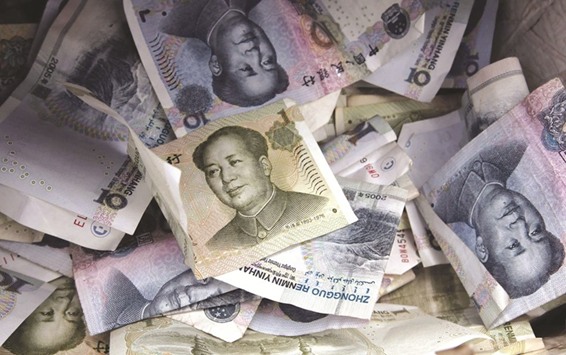Capital outflows from China eased sharply in the first quarter and cross border flows were more balanced, the foreign exchange regulator said yesterday, in the latest official comments indicating policymakers are growing less worried about the yuan currency.
Reduced pressure from outflows has helped steady the yuan this year and brought China’s foreign currency reserves back over the closely watched $3tn mark.
Expectations for further yuan depreciation have weakened significantly, State Administration of Foreign Exchange (SAFE) spokeswoman Wang Chunying told a news conference. Net foreign exchange sales by China’s commercial banks fell sharply in the first quarter after policymakers tightened supervision on money leaving the country and as a weaker US dollar took pressure of the yuan and other emerging currencies.
Net sales of foreign exchange by Chinese commercial banks dropped to $40.9bn in the first quarter, compared with $124.8bn in the first quarter of 2016 and $337.7bn in sales last year, SAFE data showed.
The yuan slumped around 6.5% against the surging dollar last year, but has firmed nearly 1% so far in 2017 at the dollar recoiled.
Though most analysts polled by Reuters earlier this month still expect the yuan’s downtrend to resume later in the year – assuming the dollar will recover – some market watchers such as Macquarie Capital Ltd now forecast no depreciation this year.
China’s improving economy has helped support the currency even as the US central bank raises interest rates, Wang said. The economy grew at the strongest pace since mid-2015 in the first quarter. The central bank said last week its net foreign exchange sales in March were the lowest in 10 months at 54.7bn yuan ($7.94bn), while China’s foreign exchange reserves edged up in March to $3.009tn. Premier Li Keqiang said on Tuesday that market confidence in the yuan has significantly improved, Xinhua news agency reported.
Sources told Reuters on Wednesday that China’s central bank has relaxed some of the curbs on cross-border capital outflows, the first signs of easing of measures put in place last year as authorities and financial markets feel more confident that pressure on the yuan has eased.
As the yuan fell against the dollar and capital outflows accelerated late last year, the government stepped up capital controls, making it harder for individuals and companies to move money out of China.
Those measures are credited with quashing speculative outflows and helping to stabilise the currency, but have also hampered legitimate outflows as China Inc goes more global.
Non-financial outbound direct investment from China tumbled 48.8% in the first quarter year-on-year, with dealmakers saying many Chinese firms are unable to close deals because they cannot secure official permission to transfer yuan into foreign currency.

Reduced pressure from capital outflows has helped steady the yuan this year and brought China’s foreign currency reserves back over the closely watched $3tn mark. Expectations for further yuan depreciation have weakened significantly, State Administration of Foreign Exchange (SAFE) spokeswoman Wang Chunying told a news conference


